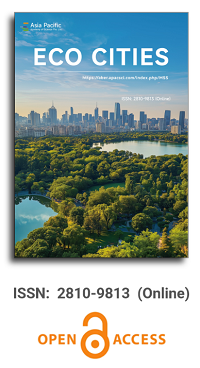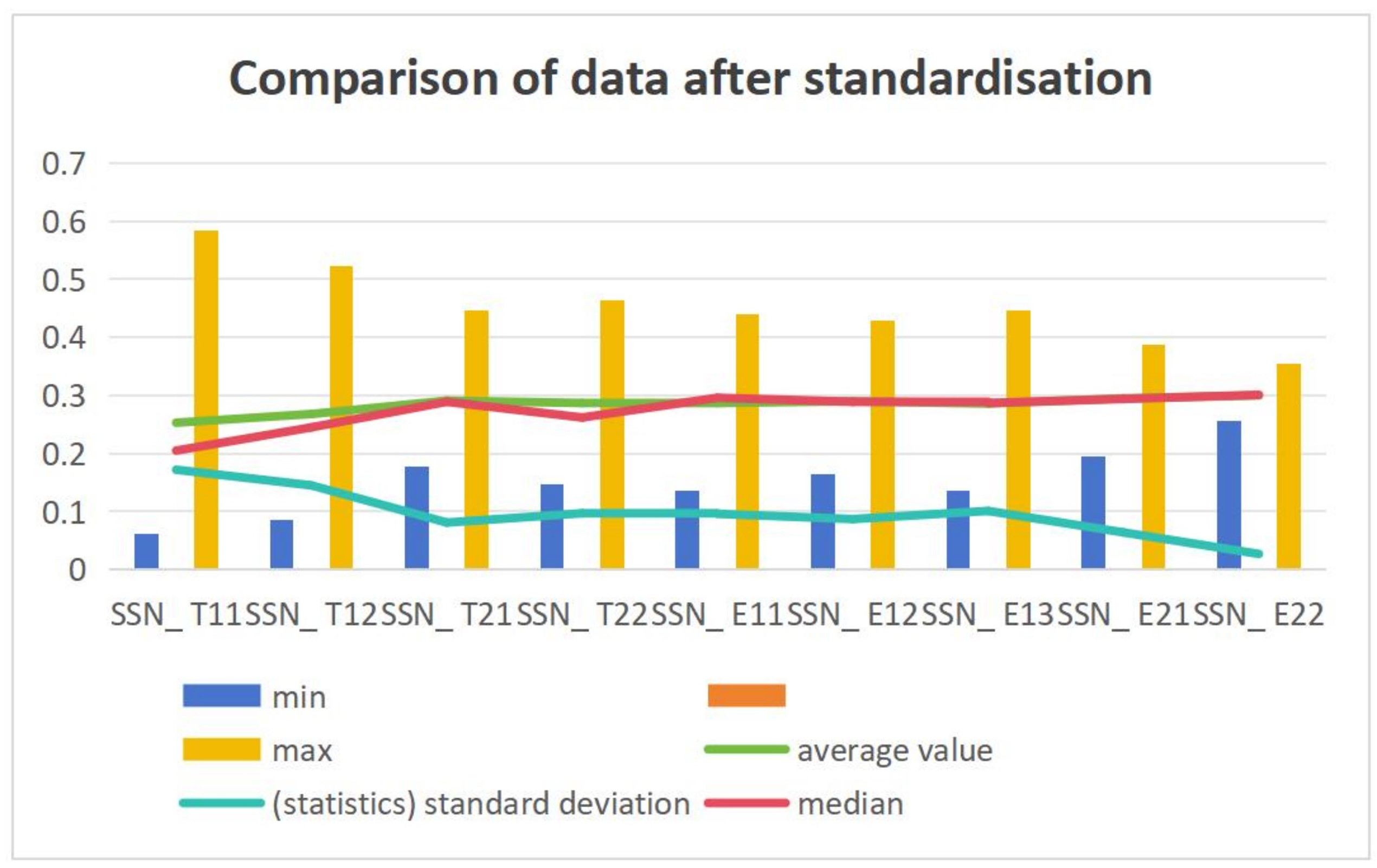


Nature-based solutions for climate change mitigation: A perspective on challenges, potential and limitations
Vol 5, Issue 1, 2024
Download PDF
Abstract
This opinion article delves into the critical role of nature-based solutions (NbS) for climate change mitigation. Despite their recognized potential, the multifaceted challenges of NbS remain complex and under-explored. Both potential and limitations are discussed, including economic, social, and political considerations. The importance of an interdisciplinary approach and adaptation to diverse socioeconomic and cultural contexts to ensure equitable implementation of NbS is highlighted. This brief but critical perspective seeks to enrich the academic view and provide actionable insights for urban planners and policymakers. Finally, it proposes directions for future studies for researchers in the fields of sustainable urban development and climate change mitigation.
Keywords
References
- Santos MM, Lanzinha JCG, Ferreira AV. Review on urbanism and climate change. Cities. 2021; 114: 103176. doi: 10.1016/j.cities.2021.103176
- Pauleit S, Sauerwein M, Breuste J. Urbanisation and its challenges for ecological urban development. Urban Ecosystems: Function, Management and Development. 2021; 1.
- Pauleit S, Sauerwein M, Breuste J. Urbanisation and its challenges for ecological urban development. In: Urban Ecosystems: Function, Management and Development. Springer; 2021. pp. 1-39.
- Locatelli L, Guerrero M, Russo B, et al. Socio-economic assessment of green infrastructure for climate change adaptation in the context of urban drainage planning. Sustainability. 2020; 12(9): 3792. doi: 10.3390/su12093792
- Pamukcu-Albers P, Ugolini F, La Rosa D, et al. Building green infrastructure to enhance urban resilience to climate change and pandemics. Landscape Ecology. 2021; 36(3): 665-673. doi: 10.1007/s10980-021-01212-y
- Choi C, Berry P, Smith A. The climate benefits, co-benefits, and trade-offs of green infrastructure: A systematic literature review. Journal of Environmental Management. 2021; 291: 112583. doi: 10.1016/j.jenvman.2021.112583
- Senosiain J. Urban regreeneration: Green urban infrastructure as a response to climate change mitigation and adaptation. International Journal of Design & Nature and Ecodynamics. 2020; 15(1): 33-38. doi: 10.18280/ijdne.150105
- Shade C, Kremer P, Rockwell JS, et al. The effects of urban development and current green infrastructure policy on future climate change resilience. Ecology and Society. 2020; 25(4). doi: 10.5751/es-12076-250437
- Epelde L, Mendizabal M, Gutiérrez L, et al. Quantification of the environmental effectiveness of nature-based solutions for increasing the resilience of cities under climate change. Urban Forestry & Urban Greening. 2022; 67: 127433. doi: 10.1016/j.ufug.2021.127433
- Raymond CM, Frantzeskaki N, Kabisch N, et al. A framework for assessing and implementing the co-benefits of nature-based solutions in urban areas. Environmental Science & Policy. 2017; 77: 15-24. doi: 10.1016/j.envsci.2017.07.008
- Giupponi L, Borgonovo G, Giorgi A, et al. How to renew soil bioengineering for slope stabilization: Some proposals. Landscape and Ecological Engineering. 2018; 15(1): 37-50. doi: 10.1007/s11355-018-0359-9
- Bressane A, Fengler FH, Medeiros LC de C, et al. Enhancing energy sustainability of building projects through nature-based solutions: A fuzzy-based decision support system. Nature-Based Solutions. 2024; 5: 100107. doi: 10.1016/j.nbsj.2023.100107
- Barriuso F, Urbano B. Green roofs and walls design intended to mitigate climate change in urban areas across all continents. Sustainability. 2021; 13(4): 2245. doi: 10.3390/su13042245
- Cirrincione L, Marvuglia A, Scaccianoce G. Assessing the effectiveness of green roofs in enhancing the energy and indoor comfort resilience of urban buildings to climate change: Methodology proposal and application. Building and Environment. 2021; 205: 108198. doi: 10.1016/j.buildenv.2021.108198
- Quaranta E, Arkar C, Branquinho C, et al. A daily time-step hydrological-energy-biomass model to estimate green roof performances across Europe to support planning and policies. Urban Forestry & Urban Greening. 2024; 93: 128211. doi: 10.1016/j.ufug.2024.128211
- Sayad B, Helmi MR, Osra OA, et al. Microscale investigation of urban heat island (UHI) in Annaba City: Unveiling factors and mitigation strategies. Sustainability. 2024; 16(2): 747. doi: 10.3390/su16020747
- Zheng Y, Chen L. Modeling the effect of green roofs for building energy savings and air pollution reduction in Shanghai. Sustainability. 2023; 16(1): 286. doi: 10.3390/su16010286
- Qiao Y, Dawson AR, Parry T, et al. Flexible pavements and climate change: A comprehensive review and implications. Sustainability. 2020; 12(3): 1057. doi: 10.3390/su12031057
- Kia A. Permeable concrete pavements for a climate change resilient built environment. Adapting the Built Environment for Climate Change. 2023; 297-326. doi: 10.1016/b978-0-323-95336-8.00006-8
- Zhu L, Li J, Xiao F. Carbon emission quantification and reduction in pavement use phase: A review. Journal of Traffic and Transportation Engineering (English Edition). 2024; 11(1): 69-91. doi: 10.1016/j.jtte.2023.09.004
- Mamajonova N, Oydin M, Usmonali T, et al. The role of green spaces in urban planning enhancing sustainability and quality of life. Holders of Reason. 2024; 2(1): 346-358.
- Ashofteh PS, Pourali Dougaheh M. Ranking the optimal combination of low-impact urban development systems under climate change with the TODIM multi-criteria decision-making method. Journal of Cleaner Production. 2024; 434: 140108. doi: 10.1016/j.jclepro.2023.140108
- Zhang B, Brack CL. Urban forest responses to climate change: A case study in Canberra. Urban Forestry & Urban Greening. 2021; 57: 126910. doi: 10.1016/j.ufug.2020.126910
- Chen Q, Liu S, Pan Z, et al. Projected LUCC dynamics and ecosystem services in an emerging urban agglomeration under SSP-RCP scenarios and management implications. Available online: https://papers.ssrn.com/sol3/papers.cfm?abstract_id=4705719 (accessed on 1 December 2023).
- Locke DH, Baker M, Alonzo M, et al. Variation the in relationship between urban tree canopy and air temperature reduction under a range of daily weather conditions. Heliyon. 2024; 10(3): e25041. doi: 10.1016/j.heliyon.2024.e25041
- Sousa-Silva R, Zanocco C. Assessing public attitudes towards urban green spaces as a heat adaptation strategy: Insights from Germany. Landscape and Urban Planning. 2024; 245: 105013. doi: 10.1016/j.landurbplan.2024.105013
- Barkenbus JN. Prospects for electric vehicles. Sustainability. 2020; 12(14): 5813. doi: 10.3390/su12145813
- Wolfram P, Tu Q, Heeren N, et al. Material efficiency and climate change mitigation of passenger vehicles. Journal of Industrial Ecology. 2020; 25(2): 494-510. doi: 10.1111/jiec.13067
- Zhou W, Bi G, Wang Y, Zhao J. Economic analysis of online DC-Drive system for long distance heavy-duty transport vehicle incorporating multi-factor sensitivities. Available online: https://www.sae.org/publications/technical-papers/content/2024-01-2452/ (accessed on 9 April 2024).
- Ibekwe KI, Etukudoh EA, Nwokediegwu ZQS, et al. Energy security in the global context: A comprehensive review of geopolitical dynamics and policies. Engineering Science & Technology Journal. 2024; 5(1): 152-168. doi: 10.51594/estj.v5i1.741
- Umoh AA, Ohenhen PE, Chidolue O, et al. Incorporating energy efficiency in urban planning: A review of policies and best practices. Engineering Science & Technology Journal. 2024; 5(1): 83-98. doi: 10.51594/estj.v5i1.729
- Santos MM, Lanzinha JCG, Ferreira AV. Review on urbanism and climate change. Cities. 2021; 114: 103176. doi: 10.1016/j.cities.2021.103176
- Umoh AA, Adefemi A, Ibewe KI, et al. Green architecture and energy efficiency: A review of innovative design and construction techniques. Engineering Science & Technology Journal. 2024; 5(1): 185-200. doi: 10.51594/estj.v5i1.743
- Huang L, Chen K, Zhou M. Climate change and carbon sink: A bibliometric analysis. Environmental Science and Pollution Research. 2020; 27(8): 8740-8758. doi: 10.1007/s11356-019-07489-6
- Shao H, Kim G. A Comprehensive review of different types of green infrastructure to mitigate urban heat islands: progress, functions, and benefits. Land. 2022; 11(10): 1792. doi: 10.3390/land11101792
- Olabi AG, Abdelkareem MA. Renewable energy and climate change. Renewable and Sustainable Energy Reviews. 2022; 158: 112111. doi: 10.1016/j.rser.2022.112111
- Lehmann S. Growing biodiverse urban futures: Renaturalization and rewilding as strategies to strengthen urban resilience. Sustainability. 2021; 13(5): 2932. doi: 10.3390/su13052932
- Siehr SA, Sun M, Aranda Nucamendi JL. Blue‐green infrastructure for climate resilience and urban multifunctionality in Chinese cities. WIREs Energy and Environment. 2022; 11(5). doi: 10.1002/wene.447
- Han H. Singapore, a garden city. The Journal of Environment & Development. 2016; 26(1): 3–24. doi: 10.1177/1070496516677365
- Ziersen J, Clauson-Kaas J, Rasmussen J. The role of Greater Copenhagen Utility in implementing the city’s Cloudburst Management Plan. Water Practice and Technology. 2017; 12(2): 338-343. doi: 10.2166/wpt.2017.039
- Grimm IJ, Piva JHT, Sampaio CAC. Municipal private natural heritage reserves: Uses and attributions of natural protected areas in the city of Curitiba (PR). In: Fuders F, Donoso P (editors). Ecological Economic and Socio Ecological Strategies for Forest Conservation: A Transdisciplinary Approach Focused on Chile and Brazil. Springer; 2020. pp. 227-240. doi: 10.1007/978-3-030-35379-7_12
- Cho MR. The politics of urban nature restoration: The case of Cheonggyecheon restoration in Seoul, Korea. International Development Planning Review. 2010; 32(2): 145-165. doi: 10.3828/idpr.2010.05
- Chang H, Baker AM, Starry O, et al. Seasonal variation in hydrologic performance of ecoroofs of multiple depths– a case study in Portland, Oregon, USA. Urban Water Journal. 2020; 18(2): 128-135. doi: 10.1080/1573062x.2020.1850806
- Bush J, Coffey B, Fastenrath S. Governing urban greening at a metropolitan scale: An analysis of the Living Melbourne strategy. Australian Planner. 2020; 56(2): 95-102. doi: 10.1080/07293682.2020.1739093
Supporting Agencies
Copyright (c) 2024 Adriano Bressane, Rogério Galante Negri, Liliam César de Castro Medeiros
License URL: https://creativecommons.org/licenses/by/4.0/

This site is licensed under a Creative Commons Attribution 4.0 International License (CC BY 4.0).

Chinese Academy of Sciences, China
Indexing & Archiving
Asia Pacific Academy of Science Pte. Ltd. (APACSCI) specializes in international journal publishing. APACSCI adopts the open access publishing model and provides an important communication bridge for academic groups whose interest fields include engineering, technology, medicine, computer, mathematics, agriculture and forestry, and environment.



.jpg)

.jpg)



